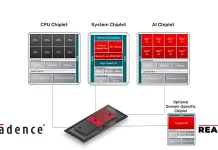In the ever-evolving landscape of materials engineering, one class of materials stands out for its remarkable blend of strength, versatility, and lightness is high performance composites. These advanced materials are not just an incremental improvement over traditional materials; they represent a paradigm shift in how we design and manufacture products. According to Extrapolate, the global high performancemposites market is anticipated to generate a revenue of $40.5 billion by 2028. By harnessing the unique characteristics of materials like carbon fibers and advanced resins, engineers have unlocked new possibilities in efficiency, durability, and design flexibility.
Let’s take a closer look at the se composites in this beginner’s guide.
What are High Performance Composites?
High performance composites are advanced materials created by combining two or more constituent materials that possess notably distinct physical or chemical properties. These materials are combined to produce a composite that exhibits characteristics superior to those of its individual components. The key ingredients typically include a reinforcement material (such as fibers or particles) and a matrix material (such as polymers, metals, or ceramics).
The Building Blocks: Reinforcements and Matrices
Reinforcements: The selection of reinforcement plays a crucial role in defining the strength and stiffness of the composite material. Common reinforcements include carbon fibers, glass fibers, aramid fibers (such as Kevlar), and natural fibers like hemp or flax. These fibers provide high tensile strength and stiffness, making composites ideal for applications where lightweight, strong materials are essential.
Matrices: The matrix material binds the reinforcement together and facilitates the transfer of loads between the fibers. It also protects the fibers from environmental damage and determines other properties like toughness, resistance to chemicals, and ease of processing. Polymers such as epoxy, polyester, and vinyl ester are popular matrix materials due to their versatility and ease of fabrication.
Properties that Set Them Apart
Strength and Stiffness: Composites are renowned for their exceptional strength-to-weight ratios. Materials like carbon fiber boast tensile strengths higher than steel at a fraction of the weight, making them ideal for applications where weight savings are critical without sacrificing structural integrity.
Durability and Fatigue Resistance: Unlike metals, composites can be tailored to resist corrosion and fatigue, crucial for applications exposed to harsh environments or repetitive stress.
Design Flexibility: Composites can be molded into complex shapes and sizes, offering designers unprecedented freedom to optimize performance and aerodynamics. This flexibility is a game-changer in industries such as aerospace and automotive, where efficiency and performance are paramount.
Top 5 High Performance Composites Brands
The market for these composites is diverse and includes several prominent brands known for their innovative materials and solutions. Here are five notable brands that have made significant contributions to the field:
1. Hexcel Corporation
Hexcel is a leading manufacturer of advanced composites, including carbon fibers, reinforcements, prepregs, and other composite materials. They serve a wide range of industries such as aerospace, defense, wind energy, and automotive.
2. Toray Industries
Toray is a Japanese multinational corporation known for its expertise in carbon fiber and advanced composite materials. They produce a variety of products including prepregs, thermoplastic composites, and carbon fiber-reinforced plastics (CFRP), catering to aerospace, automotive, and industrial markets.
3. Teijin Limited
Teijin, based in Japan, is another major player in the composites industry. They produce high performance fibers such as aramid and carbon fibers, as well as thermoplastic and thermoset composite materials. Their products find applications in automotive, aerospace, and various industrial sectors.
4. SGL Carbon
SGL Carbon, headquartered in Germany, specializes in carbon-based solutions including carbon fibers, composites, and graphite specialties. They provide materials for aerospace, automotive, energy, and industrial applications.
5. Mitsubishi Chemical Advanced Materials
Formerly known as Quadrant Group, Mitsubishi Chemical Advanced Materials is a global leader in high-performance plastics and composites. They offer a wide range of thermoplastics and composites for applications in industries such as aerospace, automotive, electronics, and healthcare.
These brands are known for their commitment to innovation, quality, and pushing the boundaries of what is possible with high performance composites. They continue to drive advancements in materials science and engineering, contributing to the development of lighter, stronger, and more sustainable products across various sectors.
Looking Ahead
The future of high performance composites appears promising. Advances in nanotechnology, additive manufacturing, and computational modeling are expected to drive innovation, leading to even lighter, stronger, and more cost-effective materials. As industries increasingly prioritize sustainability, efforts are also underway to develop recyclable composites and reduce environmental impact throughout the lifecycle of these materials.
These composites represent a pinnacle of materials engineering, offering unparalleled strength, versatility, and design freedom across diverse industries. As research and development efforts continue to push boundaries, these remarkable materials are poised to shape the technologies of tomorrow, driving innovation and transforming the way we build, travel, and live.
Browse More Posts:-
Air Purifier Market
Cashew Milk Market
Aerosol Filling Machines Market
Web Collaboration Tools Market



